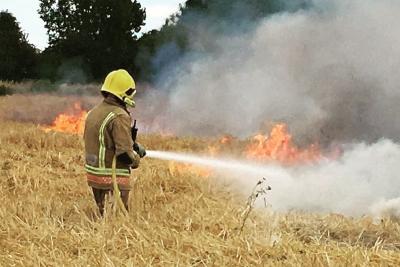Norfolk Community Risk Register

The Norfolk Community Risk Register shows the risks that could happen in our county. Each risk has a rating - from very high to low - based on how likely it is to happen and the impact it could have.
Working with our partners, the Norfolk Resilience Forum use this information to:
- Develop multi-agency emergency plans to mitigate or prevent the impact or incidents in our community
- Carry out regular training events and exercises to test emergency response plans
You can use this information to help you prepare your household, protect your business, and protect your community.
Very high risks
We class risks that could have a significant impact and are likely to happen in Norfolk as very high risks:
- Low temperatures and heavy snow
- Coastal or fluvial (river) flooding
- Influenza type pandemic
- High temperatures and heatwaves
- Outbreak of an emerging infectious disease
- Reinforced autoclaved aerated concrete (RAAC) plank failure
High risks
Risks that are more likely to happen but will have a lower impact are classed as high risks:
- Food supply contamination
- Storms
- Surface water flooding
- Industrial action (fuel supply)
- Major outbreak of foot and mouth disease (FMD)
- Major outbreak of highly pathogenic avian influenza (Bird flu)
- Major outbreak of African swine fever (ASF)
Medium risks
We class risks that are less likely to happen and/or will have a lower impact as medium risks:
- Major fire
- Fires involving waste sites
- Accidental large toxic chemical relase from an onshore Control of Major Accident Hazards (COMAH) site
- Accident involving high consequence dangerous goods
- Aviation collision
- Drought
- Industrial action (firefighters)
- Rail accident
- Wildfire
- Major outbreak of African horse sickness
Low risks
Low risks are less likely to happen in Norfolk and will have a lower impact:
- Accidental fire or explosion at an onshore major accident hazard pipeline
- Accidental fire or explosion at an onshore Control of Major Accident Hazards (COMAH) site
- Accidental fire or explosion at an onshore fuel pipeline
- Major maritime pollution
- Reservoir or dam collapse
- Large passenger vessel accident
- Incident (grounding or sinking) of a vessel blocking a major port
How we assess risks
Bringing together key organisations to assess incidents that could impact the county is a key role of the Norfolk Resilience Form (NRF).
The Civil Contingencies Act 2004 requires us to:
- Identify incidents (risks) that could happen in Norfolk
- Assess their potential impact - for example, on the environment, people, health, and schools
- Make this information available for the community in a Community Risk Register.
The Government assesses the most serious risks facing the UK. It then provides this information to Local Resilience Forums through the National Security Risk Assessment. The National Risk Register is the public facing version of this information, and details all the risks that could impact the UK.
We use the National Security Risk Assessment to identify which risks could have an impact on Norfolk. Organisations work together to identify what mitigations can be put in place locally. Where the risk information differs slightly for Norfolk, we develop a local risk assessment. For example, our county's coastal nature means our flooding risk is higher than land-locked counties. Where the risk information is the same, we adopt a national risk assessment.




